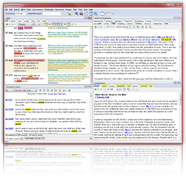Milan, Council of
Milan, Council Of.
There is no historical proof extant to warrant the assertion that any Church councils or synods were held at Milan before 355 A.D. We have no reliable information concerning the synod which is said to have been held at Milan in 344 (see Hardouin, Acta Conciliorum et Epistolce decretales ac Constitutiones, etc. [Paris, 1715], 1:627 sq.), and very little is known of the synod of 346 (or 347). In that year a council of Western bishops was summoned at Milan, when the so-called Long Creed (μακρόστιχος, to be found in Socrates, Hist. Eccl. 2:18), which had been drawn up by the Arian Council of Antioch (A.D. 345), was rejected. The council also required the deputies who brought it to sign a condemnation of Arianism. Of course they left the council in wrath (see J. Dominic, Mansi Sacrorum conciliorum nova et. amplissima collectio, etc. [Florent. 1759], 2:1370). After the death of Constance (A.D. 350), and the victory over Magnentius (A.D. 353), Constantius endeavored to establish Arianism by force in the West. In the synods of Arles (A.D. 354) and of Milan (A.D. 358), he compelled the assembled bishops to sign the condemnation of Athanasius, though most of them were, it is thought, orthodox. Constantius was now sole master of the Roman world, and by bribes, by threats, and by force, the condemnation of Athanasius was extorted from the assembled bishops. Even Liberius (q.v.), the successor of Julius I, rejected Athanasius, from fear of Constantius, but soon afterwards threw off his timidity, and refused to subscribe to his condemnation (see Mansi, 3:233 sq.; Hefele, 1:631).
The next council was held A.D. 390, St. Ambrose presiding. It is commonly supposed that in this council the sentence of the Gallic bishops against Ithacius Ursacius (who had caused the death of the Priscillianists by their fiery zeal against their errors) was confirmed by the bishops of Italy. Baronius (as well as the collection of councils) states that this same council condemned Jovinian, the author of a new heresy, which decried the merit of virginity. St. Jerome reduces his doctrine to the four following heads:
1. That virgins, widows, and married women, being baptized, have the same degree of merit, if there be no. difference between them in other respects.
2. That they who have been regenerated in baptism cannot be overcome by the devil.
3. That there is no difference in point of merit, between those who abstain from meat and those who partake of it with thanksgiving.
4. That all those who have kept their baptismal state shall have the same glory in heaven.
From these principles other errors were deduced, viz. that there is no difference of degree in sin; that fasting is not requisite; that there will be no distinction of merits in heaven. The fathers of the council condemned the opinions of Jovinian- and his followers, and they were driven out of the city. See Mansi, 1.c. 690; Gieseler, 1:333.; Hefele, 2:48.
Another council was held at Milan in 451, convoked by Eusebius, bishop of Milan, at the request of St. Leo the Great. All the suffragans of Milan were present, in. all twenty bishops, among whom were Crispinus of Pavia, Maximus of Turin, Abundius of Como, Optatianus of Brescia. The letter of the pope to Eusebius was read; the legates then made a report of what was passing in the East, and especially of the miseries existing from the acts of the Latrocinium at Ephesus; afterwards the celebrated letter of St. Leo to Flavianus was read, and the council unanimously declared that it contained the true doctrine of the Catholic Church upon the subject of the Incarnation (q.v.), and that it was built upon the teachings of the prophets, evangelists, and apostles. At the same time they decreed that all who should oppose this doctrine should be anathematized. Finally, a synodal letter was addressed to the pope filled with expressions of esteem and respect (Mansi, 2:78 sq.; Hefele, Conciliengeschichte, 2:374 sq.). In A.D. 679 pope Agatho summoned a council at Milan to condemn anew the heresy of Monothelism (q.v.) (Mansi, 11:174; Hefele, 3:228). The provincial synods of A.D. 842, 860, 880, and 1009 have no bearing upon the general history of the Church, but those interested in these are referred to Mansi, 14:790; 15:590; 17:535, and 19:310; Hefele, 4:99, 217, 770. September 12, 1287, a synod was held by Otto, the archbishop, assisted by eight of his suffragans, and the deputies of all the chapters of the province. Ten canons were published, in which they ordered the observation of the papal constitutions, and the laws of the emperor Frederick II against heretics. Abbots and abbesses, monks and nuns, were ordered to observe the rule of St. Benedict or that of St. Augustine, and monks were forbidden to enter nunneries. The power of building churches and oratories was declared to be solely in the hands of the bishop (Mansi, 24:868 sq.; Hefele, 6:225; Muratori, Rev. Ital. volume 4). From 1565 to 1582 six provincial councils were held at Milan. For information concerning-their enactments, see Concil. 15:242, 337, 365 sq., 408, 556, 706; Jo. Harduini Acta, 10:633, 1140; Christ. Wilhelm Franz Walch, Entwurf einer vollstandigen Historie der Kirchenversammlungen (Leipsic, 1759).

